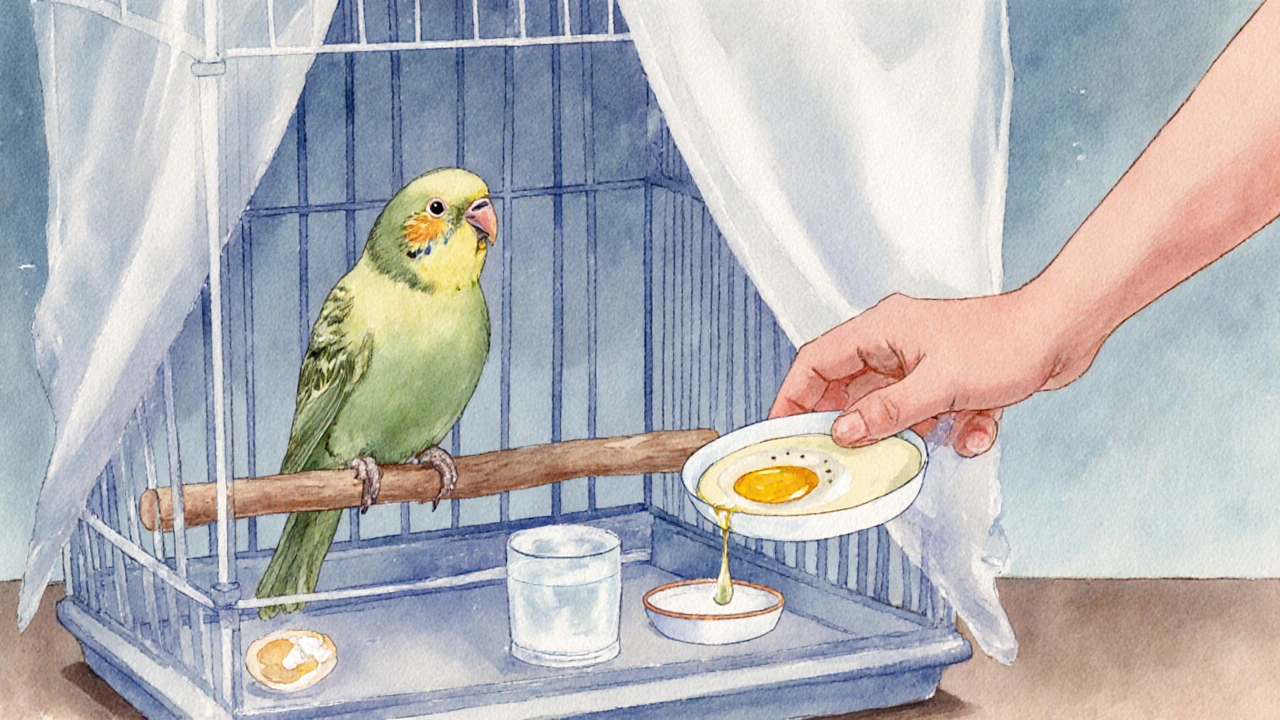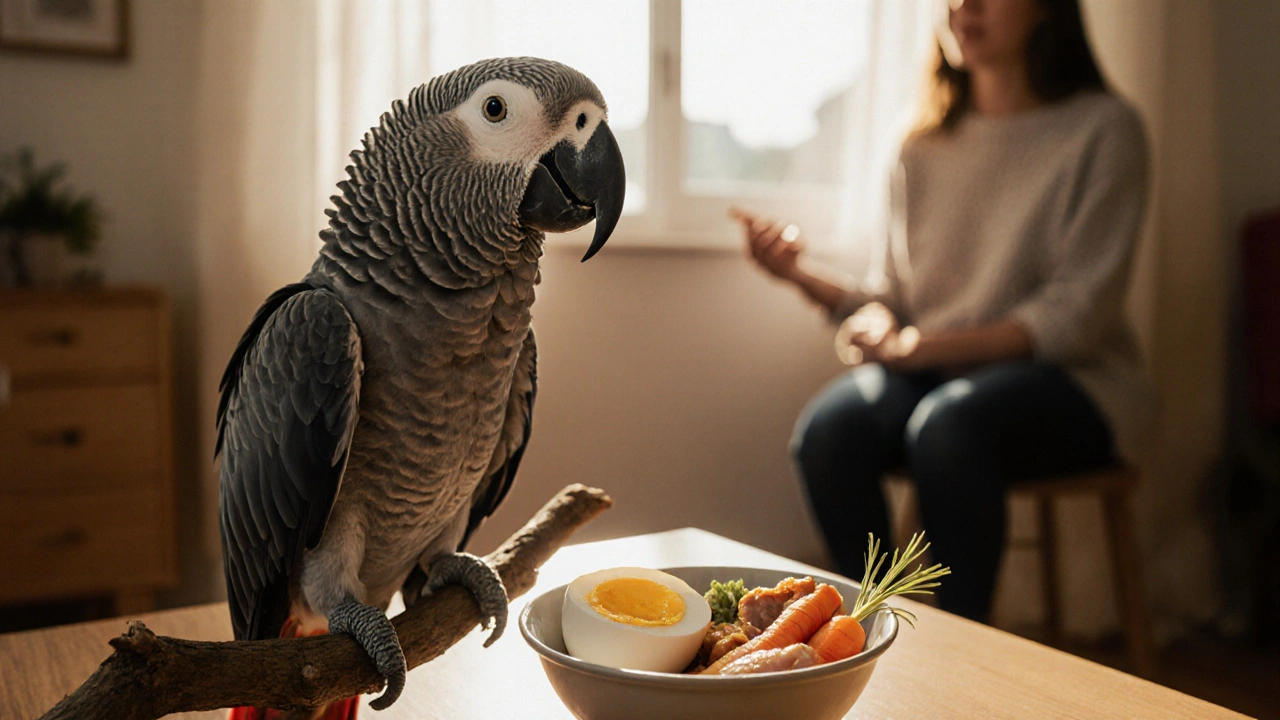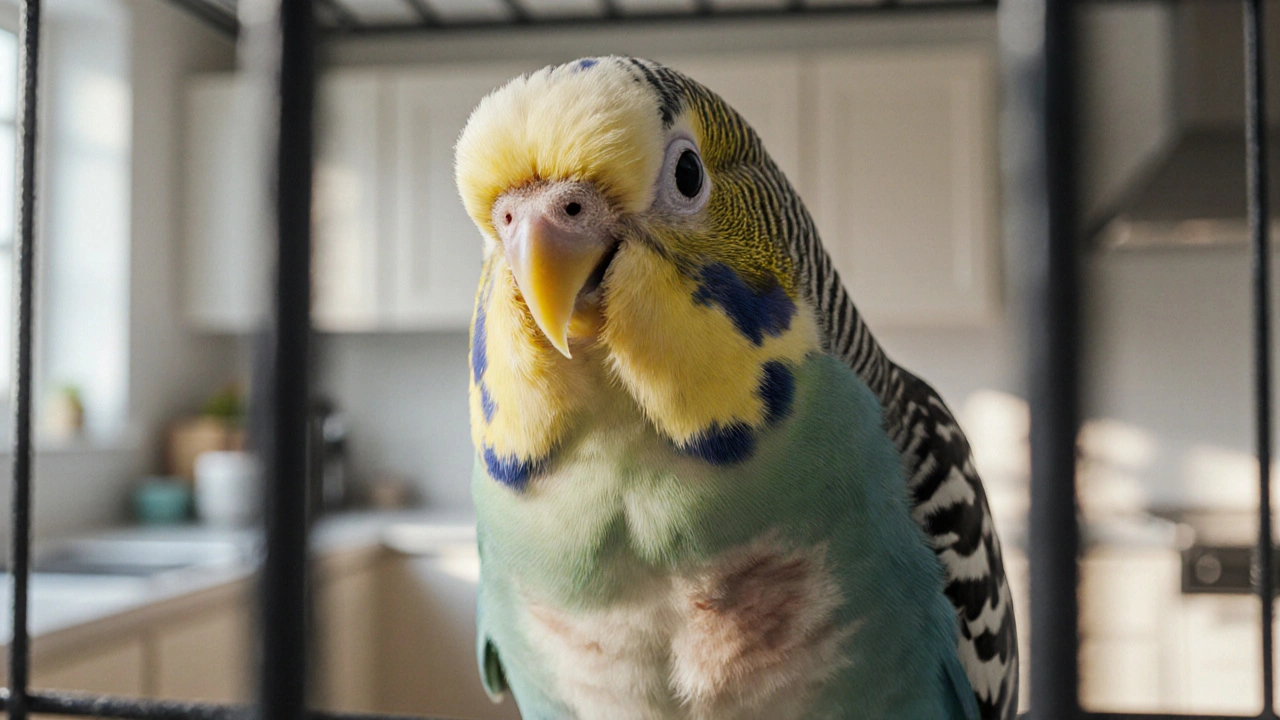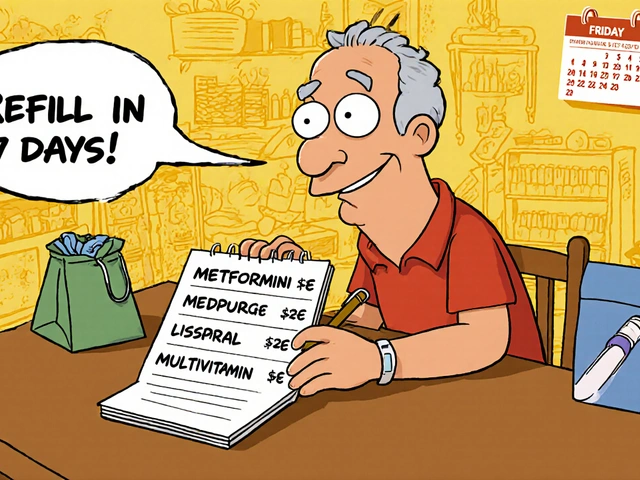Bird Deplumation Recovery Tracker
Recovery Progress
Enter details above to track your bird's recovery.
When a pet bird suddenly loses a patch of feathers, owners often panic because they’re not sure what to do. Deplumation is the rapid loss of multiple feathers, usually caused by stress, illness, or environmental factors. It can leave a bird looking ragged and feeling vulnerable. Bird refers to any feathered companion kept in a home, from budgerigars to African greys. Emotional Support means the calm, reassuring actions owners take to reduce a bird’s anxiety and aid recovery. Understanding the link between these three helps you act quickly and keep your feathered friend safe.
Quick Takeaways
- Identify stress triggers within minutes of a deplumation event.
- Offer a quiet, warm space and limit handling for the first 24‑48hours.
- Provide vitamin‑rich foods and gentle preening aids to support feather regrowth.
- Monitor behavior daily; call a vet if bleeding, weight loss, or prolonged lethargy occurs.
- Consistent, calm interaction builds trust and speeds emotional healing.
What Causes Deplumation?
Most owners discover the root cause only after watching the bird’s routine. Common triggers include:
- Environmental stress: sudden temperature changes, loud noises, or new pets.
- Health issues: infections, parasites, or hormonal imbalances.
- Nutrition deficiencies: lack of protein, calcium, or essential fatty acids.
- Behavioral factors: boredom, fear, or over‑grooming.
Pinpointing the trigger early lets you remove the stressor and start the healing process.
Spotting Signs of Avian Stress
Birds can’t tell you they’re scared, but they show clear signs. Look for:
- Fluffed feathers that stay puffed for long periods.
- Rapid, shallow breathing or clicking sounds.
- Loss of appetite or sudden weight loss.
- Increased vocalization or, conversely, complete silence.
- Feather plucking or obvious gaps-classic signs of deplumation.
When you see these cues, it’s time to act fast.

Immediate Care Steps
- Isolate the bird in a quiet, dimly lit cage away from doors and windows.
- Check for bleeding. If a feather stump is bleeding, apply a tiny dab of cornstarch to clot the blood.
- Offer fresh water and a small amount of soft, high‑protein food (e.g., softened boiled egg or commercial hand‑feeding formula).
- Limit handling to essential care only; each touch can raise cortisol levels.
- Keep the cage temperature between 22‑26°C (72‑79°F) to avoid chill.
These first 24hours are about stabilising the bird’s physiology and preventing further feather loss.
Creating a Calm Environment
A calm setting reduces the hormone avian stress levels that trigger feather plucking and health decline. Try these adjustments:
- Cover part of the cage with a breathable cloth to dim bright lights.
- Play soft, consistent background noise like white‑noise or low‑volume classical music.
- Remove mirrors, toys with loud squeakers, and any other overstimulating objects.
- Place the cage on a stable surface away from foot traffic and doors.
Consistency is key-birds thrive on predictable routines.
Building Trust and Providing Emotional Support
Even though birds can’t understand words, they sense tone and body language. Here’s how to give emotional support for birds without overwhelming them:
- Speak softly: Use a calm, steady voice when you’re near the cage.
- Gentle presence: Sit near the cage without staring directly at the bird’s eyes.
- Slow hand movements: If you need to feed or clean, move deliberately to avoid startling the bird.
- Positive reinforcement: Offer a favorite treat when the bird shows relaxed behavior, like preening calmly.
Over time, the bird learns that you’re a source of safety rather than a threat.

Nutrition & Feather Regrowth
Feather regrowth won’t happen without the right nutrients. Focus on these dietary components:
| nutrient | why it matters | good sources |
|---|---|---|
| Protein | building blocks for new feather keratin | Cooked egg, boiled chicken, high‑protein pellets |
| Omega‑3 fatty acids | reduce inflammation, improve feather quality | Flaxseed oil, fish oil (in tiny drops) |
| Vitamin A | supports skin health | Sweet potatoes, carrots, fortified pellets |
| Calcium & Magnesium | essential for strong feather shafts | Cuttlefish bone, mineral block |
| Biotin (Vitamin B7) | promotes feather growth | Egg yolk, brewer's yeast |
Offer these foods in small, frequent meals. Avoid sudden diet changes-introduce new items gradually over 2‑3 days.
When to Call a Veterinarian
Most minor cases improve with home care, but keep an eye out for red flags:
- Bleeding that won’t stop after 10minutes.
- Rapid weight loss (more than 5% in a week).
- Persistent lethargy or loss of coordination.
- Visible parasites in droppings or on the skin.
- Deplumation covering more than 30% of the body.
If any of these appear, contact a qualified avian vet-preferably one with experience in stress‑related feather disorders.
Checklist for Ongoing Support
- ✔️ Keep the cage in a quiet, temperature‑stable room.
- ✔️ Provide fresh water and a balanced, protein‑rich diet.
- ✔️ Limit handling to essential care for the first 48hours.
- ✔️ Monitor feather regrowth weekly; note any new gaps.
- ✔️ Schedule a vet check‑up if stress signs persist beyond a week.
Following this routine gives your bird the best chance of a full, healthy feather comeback.
Frequently Asked Questions
Can I use a hair dryer to dry my bird’s feathers after a molt?
No. The hot air can burn the skin and increase stress. Instead, keep the bird in a warm, draft‑free area and let it dry naturally.
Is it safe to give my bird a vitamin supplement?
Yes, but only a vet‑approved formulation. Over‑supplementing can cause liver issues. Start with a low dose and watch for any changes in appetite or droppings.
My bird keeps pulling at a single feather. What should I do?
Isolate the bird and examine the feather base for injury or parasites. If the area looks normal, reduce stressors, add a chewable toy, and monitor. If the behavior continues, see a vet.
How long does it take for new feathers to grow back?
Depending on the species, regrowth can take 4‑8weeks. Providing proper nutrition and a stress‑free environment speeds the process.
Should I bathe my bird while it’s recovering?
A light misting once a day can help keep the skin moist, but avoid full‑immersion baths until the feathers have regrown enough to provide insulation.

 Compare Inderal (Propranolol) with Alternatives: What Works Best for Anxiety, Heart Conditions, and Migraines
Compare Inderal (Propranolol) with Alternatives: What Works Best for Anxiety, Heart Conditions, and Migraines
 Albendazole’s Impact on Healthcare: Public Health Wins, Costs, and 2025 Market Reality
Albendazole’s Impact on Healthcare: Public Health Wins, Costs, and 2025 Market Reality
 How to Buy Cheap Generic Synthroid Online - A Safe, Fast Guide
How to Buy Cheap Generic Synthroid Online - A Safe, Fast Guide
 How to Set Up Medication Budgeting and Auto-Refill Alerts
How to Set Up Medication Budgeting and Auto-Refill Alerts
 Ventolin vs. Levalbuterol: A Detailed Clinical Comparison of Modern Inhalers
Ventolin vs. Levalbuterol: A Detailed Clinical Comparison of Modern Inhalers
Geraldine Grunberg
October 10, 2025 AT 20:51Great guide, really clear, and the checklist is super helpful, especially the tip about dim lighting, which I always forget, and the reminder to watch for rapid breathing, which can be a silent warning, and the step‑by‑step layout makes me feel confident, even if I'm a first‑time caretaker, thanks for sharing!
Elijah Mbachu
October 19, 2025 AT 19:15i love how it breaks down the basics fast.
Sunil Rawat
October 28, 2025 AT 17:39This is really useful for anyone with a budgie or lovebird. The part about keeping the cage quiet and dimly lit is something I always do, and the fresh water and high‑protein food tip helped my cockatiel regain weight quickly. Also, limiting handling is key; my bird seems less stressed when I just watch from a distance. Keep up the good work!
Andrew Buchanan
November 6, 2025 AT 16:03Agreed, especially the emphasis on temperature control. Maintaining 22–26 °C consistently can prevent secondary issues, and using a thermometer inside the cage is a simple yet effective measure.
Krishna Chaitanya
November 15, 2025 AT 14:27When I first saw my little macaw looking like a bald statue I felt a wave of panic that turned into pure drama. The guide arrived like a lifeline that whispered hope in my ear. I followed the quiet cage suggestion and the bird seemed to settle like a weary traveler finally home. The fresh water bowl became a sacred altar where he sipped with trembling beak. High protein food turned into a feast that sparked life back into his eyes. Limiting handling gave him space to breathe and I stopped over‑touching his fragile feathers. Temperature held steady at twenty‑four degrees and the chill of the night never crept in. Vitamin‑rich snacks turned into tiny gifts that he clutched with pride. Each day I checked his feathers and saw a tiny sprout of new plumage and my heart swelled. The checklist became my ritual and I never missed a step. I even posted updates on the tracker and the community cheered each tiny victory. Watching his beak flare with appetite reminded me of the simple joys of care. The tip about rapid breathing saved me from a panic attack when I noticed his chest rise fast. I called the vet after 48 hours of worry and they praised my dedication. Now his feathers are growing back in a cascade of colors and the drama has turned into a celebration of recovery.
diana tutaan
November 24, 2025 AT 12:51The guide overlooks the stress of long‑term isolation and fails to mention the need for social interaction after feathers grow back.
Sarah Posh
December 3, 2025 AT 11:15While there are gaps, the core steps still give a solid foundation for recovery and many owners have seen positive results.